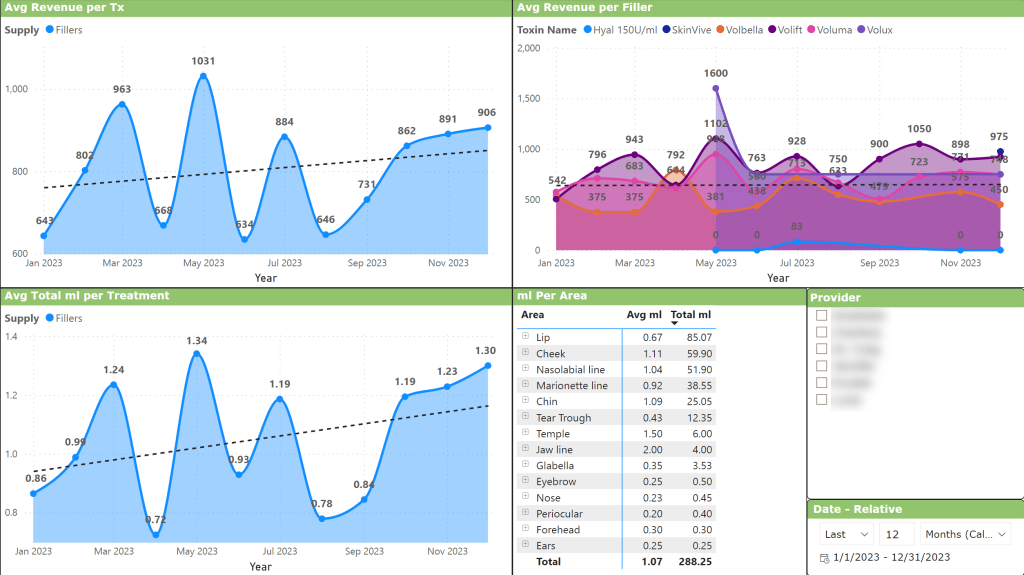The Critical Role of Analytics in Determining Average Filler Usage in Aesthetic Treatments
In the ever-evolving world of aesthetic medicine, understanding the analytics of average amounts of filler used per treatment is not just a matter of curiosity but a critical aspect of ensuring patient safety, satisfaction, and the overall success of treatments. This article delves into why these analytics are vital for practitioners, patients, and the broader cosmetic industry.

1. Optimizing Treatment Effectiveness
At the core of aesthetic treatments is the goal of achieving the desired cosmetic effect while maintaining a natural appearance. Analytics play a pivotal role in this process. By understanding the average amount of filler used across different treatment types, practitioners can better estimate the quantity required for achieving optimal results. This is particularly important given the variability in patient needs and expectations. For instance, while one patient may require a minimal amount of filler for subtle enhancement, another might need a more significant volume for a noticeable change.
2. Enhancing Patient Safety
Safety is paramount in any medical procedure, and aesthetic treatments are no exception. Overuse or underuse of fillers can lead to complications ranging from asymmetry and lumpiness to more severe issues like vascular complications. Knowledge of average filler amounts guides practitioners in administering doses that are within a safe range, minimizing the risk of adverse effects. This data-driven approach also helps in setting realistic patient expectations, reducing the likelihood of dissatisfaction or the need for corrective procedures.
3. Standardizing Practices
The field of aesthetic medicine, though highly skilled, often lacks standardization in treatment protocols. Analytics on average filler usage can serve as a benchmark for practitioners, especially those new to the field or learning new techniques. This benchmarking not only aids in training but also in maintaining consistency in treatment outcomes, which is crucial for patient satisfaction and the reputation of the practitioner.
4. Tailoring Treatments to Individual Needs
Every patient is unique, and so are their aesthetic needs. Analytics provide insights into trends and patterns in filler usage, enabling practitioners to tailor treatments more effectively. For example, demographic data (like age or gender) combined with average filler volumes can inform decisions on how much filler to use for different patient groups. This customization enhances the overall effectiveness of treatments and patient satisfaction.
5. Informing Product Development and Research
Manufacturers of dermal fillers can leverage these analytics to improve their products. Understanding the average amounts used in treatments helps in designing fillers that are more suited to the needs of practitioners and patients, whether it’s in terms of viscosity, longevity, or ease of use. Additionally, this data can inform clinical research, leading to innovations in filler materials and techniques.
6. Cost-Effectiveness and Waste Reduction
From a business perspective, understanding average filler usage is crucial for cost management. Clinics and practitioners can better estimate the amount of product needed, reducing waste and ensuring cost-effectiveness. This is particularly important given the high cost of quality fillers. Efficient use of resources not only benefits the business but also can make treatments more affordable for patients.
7. Regulatory Compliance and Quality Assurance
Finally, in an industry that is increasingly coming under regulatory scrutiny, maintaining records of average filler usage per treatment can be essential for compliance purposes. It demonstrates a commitment to best practices and quality assurance, building trust with patients and regulatory bodies.
In conclusion, the analytics of average amounts of filler used per aesthetic treatment are far more than just numbers. They are a cornerstone of patient safety, treatment effectiveness, and industry standards. By embracing a data-driven approach, practitioners can ensure that they are delivering not only beauty but also the highest standard of care to their patients.
